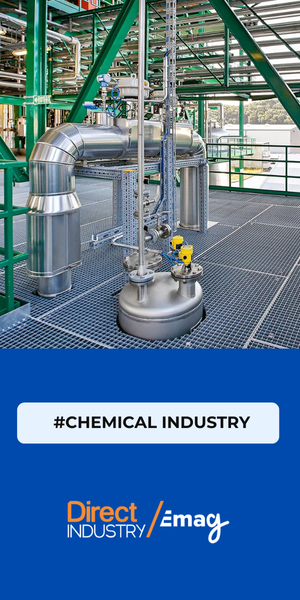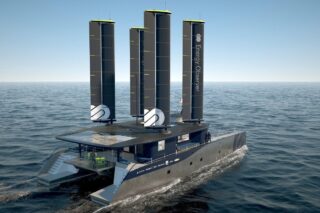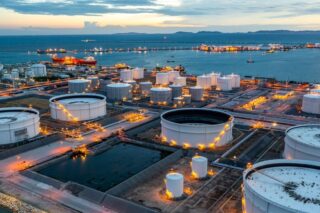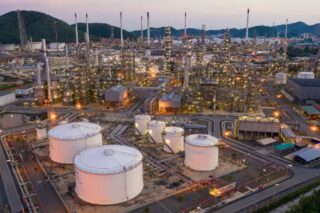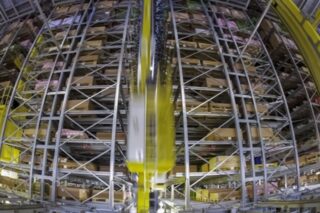How are digital tools transforming rail infrastructure projects? During the Year in Infrastructure in Vancouver, Canada, DirectIndustry encountered two UK projects using digital technology to either retrofit historical systems or build new, advanced networks. While the Elizabeth Line is leading the way in building London’s future railways, the Midland Main Line Electrification program is reimagining its past railways. One of these two projects even won the Bentley Systems’ 2024 digital award.
Global infrastructure is facing growing challenges. These include a surge in demand for more resilient energy grids, modernized transportation networks, and retrofitting existing structures to meet sustainability goals.
These projects require immense investments and time. The problem is a lack of skilled engineers to hamper progress. As the infrastructure sector focuses on sustainable development, it must prioritize optimizing and adapting the infrastructure already in place. Experts say over 95% of the infrastructure that will be in use by 2030 already exists.
READ ALSO
For Nicholas Cumins, CEO of Bentley Systems, the role of digital transformation has never been more important:
“So the pressure is not just to deliver more infrastructure but to ensure that the infrastructure that we already have is resilient is efficient, and is capable of meeting the demands of tomorrow.”
Transportation plays a crucial role in this context. Rail projects, in particular, are massive undertakings involving numerous stakeholders across various countries. For Nathan Marsh, Executive Manager EMEA at Bentley Systems, strategic rail represents the type of transformative infrastructure that Bentley is deeply committed to:
“One of the defining aspects of transportation, especially rail, is all about making better connections—whether it’s connecting a supply chain to upgrade or deliver a rail asset, a highway, or connecting people to jobs and prosperity. In Europe, the focus is primarily on upgrading [the existing rail infrastructure]—moving from moderate-speed to high-speed rail and advancing electrification, which is a major priority. The UK has an aging network that requires significant retrofitting but it also includes new developments.”
During the Year in Infrastructure, we were introduced to two rail infrastructure projects. One is focused on retrofitting old infrastructure. The other aims at building new systems.
READ ALSO
1/ Digital Innovation for Legacy Systems: the Midland Main Line Project
The growing importance of infrastructure retrofits due to the aging of much of the world’s infrastructure is one of the biggest challenges for the industry. The Midland Main Line Electrification (MMLE) Program can be framed as a showcase of how digital technology allows complex upgrades to historical rail lines to align with modern standards and sustainability goals, such as reducing CO2 emissions. The project has even won Bentley Systems’ digital award during its Year in Infrastructure event in Vancouver, earlier this month.
Electrification
The MMLE program is a multidiscipline infrastructure project implemented to increase capacity and provide a full overhead electrified route from London. It is a pivotal part of the UK government’s net-zero initiative and is one of the largest rail infrastructure decarbonization projects in the country.
Spearheaded by SPL Powerlines UK, the leading provider of electrical solutions for rail infrastructure in the UK, this £1.5 billion (€1,8 billion) project aims to deliver faster, quieter, and greener rail journeys between London and Sheffield. As the biggest investment in the line since the 1970s, it presents unique challenges in integration, design, and construction, as explained by Elliott Watson, Head of Engineering Services at SPL Powerlines:
“We’re dealing with Victorian infrastructure here, never designed to be electrified. Our mission as a lead design organization is to integrate the existing infrastructure with the new design and create the most optimal product that we possibly can for the client that meets the business case.”
SPL Powerlines UK was tasked with installing 447 single-track kilometers of overhead line along the rail corridor. However, the scheme was divided into eight route sections that SPL needed to manage across a multidiscipline team, with over 39 design teams working across various phases (track, signaling, etc). Therefore, they needed to ensure everyone had access to the latest design information. The company turned to Bentley’s suite of software products to optimize the entire lifecycle, from concept to close-out.


ProjectWise and iTwin
The team uses Bentley’s ProjectWise environment for collaborative data management. This enables seamless coordination among stakeholders and real-time updates. This reduces the chances of errors and inefficiencies during the design and construction phases.
In the design phase, the SPL team introduced an automated quality assurance tool to validate data accuracy and ensure efficient interdisciplinary checks. This process was managed through Bentley’s iTwin platform. According to SPL Powerlines, it saved over 5,000 hours in manual quality checks. The team was therefore able to focus on high-level engineering decisions and program efficiencies.
During the ongoing construction, drones and survey techniques are used to gather real-time data. When fed back into the design process, they ensure alignment with on-site conditions. This integration between digital models and physical infrastructure ensures that assets are installed correctly the first time. This has the significant benefit of minimizing rework and reducing project risks.
Project Outcomes
According to Alisdair Strachan, Lead BIM Manager at SPL Powerline, the use of these digital tools has positive outcomes:
“We were able to begin the design phase for this project, as well as the mainline project, six months earlier than any previous electrification project. This achievement is due to the strategies and digital tools we implemented, allowing us to extract and utilize data much more quickly than ever before. By utilizing iTwin for construction verification and digital surveys to enable virtual walkouts, we have reduced site visits by 94% on the project. This not only enhanced safety by keeping people off-site but also saved over 17 tons of CO2 emissions in the process.”
For Elliott, the project’s success is demonstrated by the delivery of 146 kilometers of new overhead line on time and within budget:
“This is a significant achievement for the UK’s rail industry, particularly in terms of electrification. We’ve demonstrated to the UK government that electrification is a viable option for reducing carbon emissions.
The project will be completed in 2030. SPL Powerlines will ensure a lasting legacy by handing over all collected data to clients for future maintenance and operations.
2/ New Infrastructure at Scale: The Elizabeth Line
The MMLE Program is an example of how technology can transform retrofitting rail projects. The Elizabeth Line demonstrates how urban growth and the need for sustainable transport solutions are driving investments in new infrastructure. It highlights how cities like London are preparing for future demand and reducing emissions by providing alternatives to road transport. Once again, digital solutions play a critical role in planning, building, managing, forecasting, and optimizing railway assets.
Addition to London’s Public Transport
The Elizabeth Line, which fully opened in May 2023, (the construction began in 2011) is the most significant addition to London’s public transport system since 1968. Connecting central London with Heathrow, Reading, and the financial district of Canary Wharf, this £19 billion (€22 billion) project aims to transform urban mobility and how passengers use public transport within London.
According to Hannah Donovan, Transport Planner at Transport for London (TfL),
“The three key objectives for the Elizabeth Line at the time of funding were to position London as a leading global city, tackle congestion on the rail network, and improve connectivity both into and within London.”
LEGION & OpenPaths
TfL operates the line and wanted to understand future demand patterns to ensure that it would run smoothly for years to come. Accurately forecasting passenger behavior was crucial to ensuring the right train capacity for meeting future demand. The main challenge was producing realistic and reliable forecasts.
Therefore, TfL turned to advanced digital tools, such as Bentley’s OpenPaths and LEGION, for both the design and operational phases.
OpenPaths enabled TfL to model transport flows much faster than traditional methods. This tool, compatible with vast datasets, can run complex crowd and demand simulations in just two hours, a 70% reduction in previous model runtimes. Hannah Donovan adds:
“OpenPaths enables us to generate valuable information quickly and present it in accessible formats. With just a few clicks, we can extract station-to-station data in around two minutes, a process that used to take days and involved a high margin of error.
The other tool, LEGION, tested iterative station designs over the project lifecycle, ensuring optimal station design and adherence to passenger safety standards. The objective was also to ensure that the railway system would accommodate projected passenger volumes in the long term and have sufficient capacity until 2076.
“For new stations, we need to determine their optimal size, how many escalators are required, and whether the platforms, passageways, and walkways provide adequate space.”
For example, instead of adding a costly second entrance at Paddington station, LEGION identified ways to improve passenger flow with fewer escalators, saving £2 million per escalator.
According to Hannah Donovan, one of the great benefits of digital tools is that the outputs can be used by non-modeling transport experts:
“Decision makers and stakeholders can understand why a forecast has changed and the drivers behind it. We can get data from historical forecasts and tell a narrative. The fact that we can give this narrative means that decision-makers have more faith in our outputs.”

Outcomes
The Elizabeth Line operates up to 24 trains per hour with a capacity of 1,500 passengers per train. It has increased London’s rail capacity by 10% and delivered 10 new and 31 upgraded step-free stations.
One of the primary goals of the Elizabeth Line was to reduce congestion and shift more travelers from cars to public transport. Thanks to digital tools, TfL was able to forecast that the new line will cut 10 million car journeys annually, explains Hannah Donovan:
“An annual forecast of 10 million fewer car journeys, primarily outside central London, is expected to reduce congestion, free up road capacity, and decrease road accidents. OpenPaths enabled us to translate this mode shift into a measurable CO2 impact, which factors into our value-for-money decisions alongside revenue and on-train crowding effects. TfL aims to achieve carbon neutrality by 2030, and this capability has helped evaluate whether this goal is realistic.”
According to her, the Elizabeth Line contributes to an overall net reduction of 900 tonnes of CO2 emissions per year, as passengers shift from more polluting forms of transport to greener alternatives.
“An additional 1.5 million people in London now live within 45 minutes of central London thanks to the Elizabeth Line. The line has significantly reduced journey times, increased rail capacity by 10%, and transformed accessibility. Additionally, it has provided a substantial economic boost, contributing £42 billion (€50 billion) to the UK economy in terms of GDP growth.”
In its first two years of operation, the Elizabeth Line carried 210 million passengers—just 11% below forecasts (OpenPaths forecasts expected 238 million passengers). It is however showcasing the accuracy and efficiency of TfL’s digital forecasting models.
These tools will continue to play a critical role in London’s public transport network as TfL explores further enhancements and extensions.
The Elizabeth Line, with its advanced use of digital modeling and management tools, has delivered on its promise of creating a faster, greener, and more connected London, setting a precedent for future urban infrastructure projects.
Reducing carbon footprints in infrastructure projects has become inevitable. Both railway systems presented in this article align with sustainability objectives, such as decarbonization. The Midland Mainline Electrification reduces carbon emissions by moving from diesel-powered trains to electric ones. Meanwhile, the Elizabeth Line contributes to fewer car journeys and less CO2. They both illustrate how infrastructure development can help meet global environmental targets.





